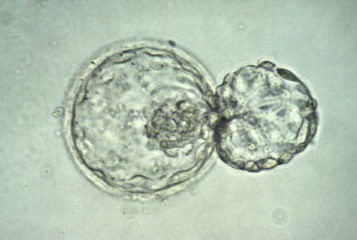Researchers have published the entire DNA sequence of the chicken genome, alongside a detailed comparison with the genetic code of humans, and other animals. The international team first announced the completion of a 'rough draft' of the chicken genome in March, and have now published the final version in the journal Nature. The scientists say that chickens and humans share more than half of their genes, g, but that their DNA varies in ways that may explain some of the important differences between birds and mammals
Comparing human genes to those of other species is an invaluable tool for scientists trying to work out what human genes do. The red jungle fowl (Gallus gallus) is the ancestor of all domestic chickens, and is the first bird to have its genome studied in detail. Made up of around one billion DNA base-pairs (chemical 'letters'), the chicken genome is around a third the size of our own, but contains around 20,000-23,000 genes, roughly the same number as humans. 'The chicken genome fills a crucial gap in our scientific knowledge', said Francis Collins, director of the National Human Genome Research Institute (NHGRI), which played a major role in the project. 'Located between mammals and fish on the tree of life, the chicken is well positioned to provide us with new insights into genome evolution and human biology', he added.
About 60 per cent of the chicken's genes have a human counterpart, although they are only 75 per cent identical on average, compared to rodent genes, which are 88 percent identical. The genes that differed most between chickens and humans are those involved in the immune system, reproduction and adaptation to the environment. Many of the shared genes are also present in the puffer fish genome, which suggests they are likely to be present in most vertebrates, say the researchers.
The chicken genome also threw up some surprises - for example, chickens appear to have many more genes for detecting smells than humans, despite the traditional view that birds have a poor sense of smell. But chickens have fewer taste genes than other mammals, particularly those involved in detecting bitter tastes. The researchers also discovered that chicken genes crucial for making eggshells have human versions, which play a key role in making human bones.
The chicken is widely used in biomedical research, especially in embryology and developmental biology - mainly because it is relatively easy to study chick embryos at any stage of development, compared to mammals. Recent outbreaks of avian flu have triggered increased interest in the chicken genome, and in how genetic variation may play a role in susceptibility to different strains of the disease.
Sources and References
-
Chickens join the genome club
-
Chicken gives up genetic secrets
-
Chicken DNA may unlock secrets of evolution
-
Researchers Compare Chicken, Human Genomes





Leave a Reply
You must be logged in to post a comment.